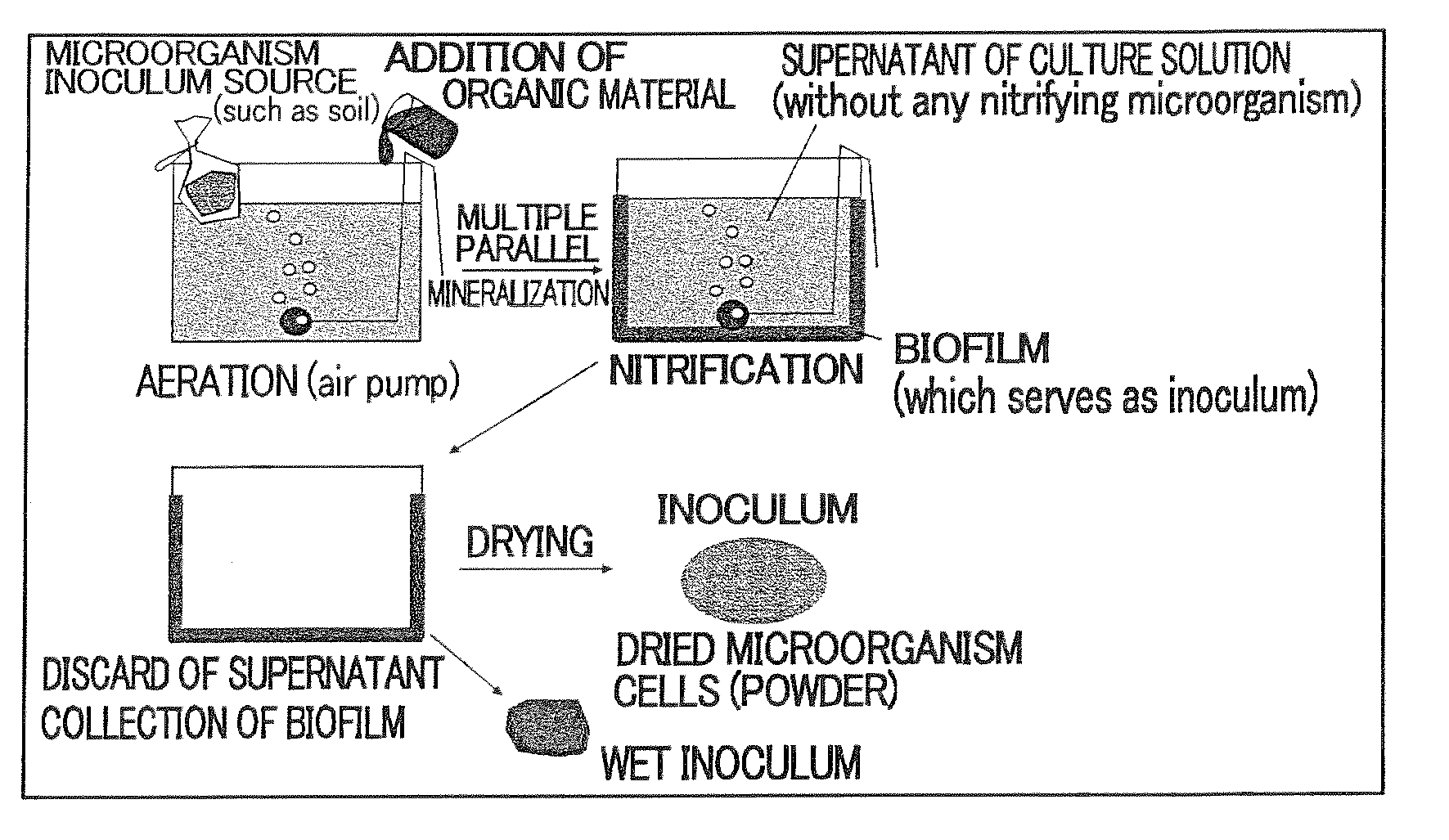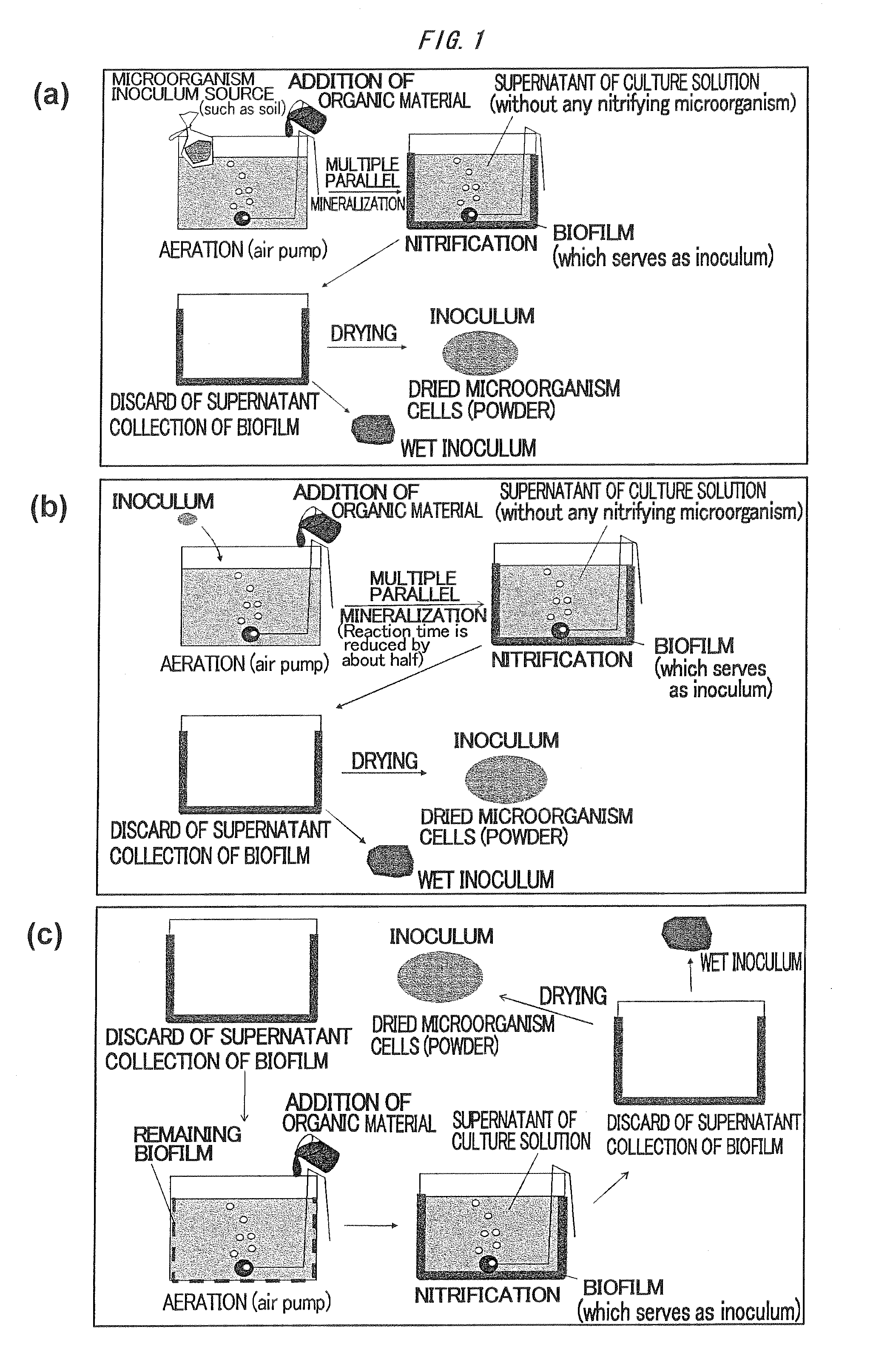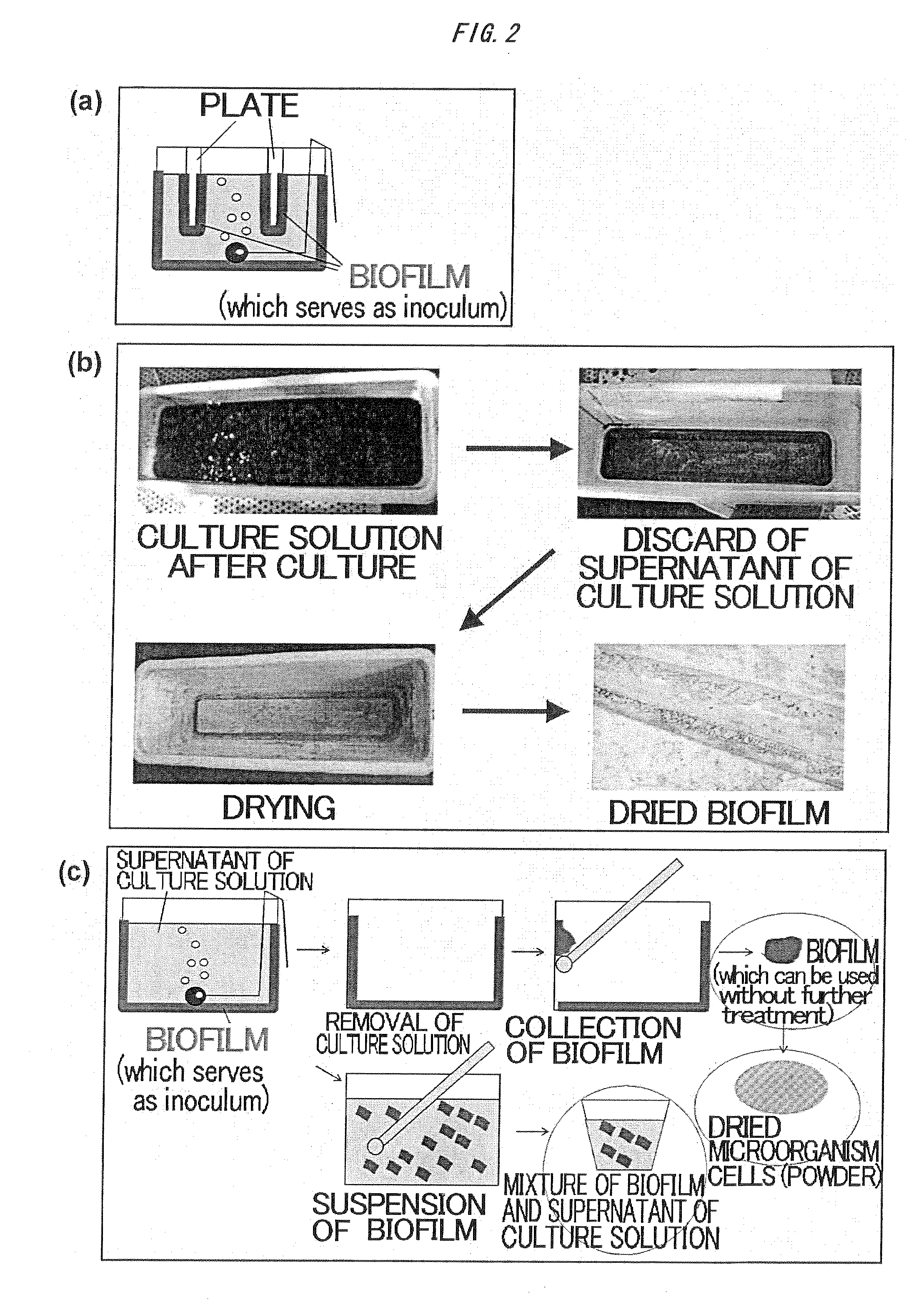Method for production of inoculum of microorganisms optimized as catalyst for multiple parallel mineralization
a technology of inoculum and mineralization, which is applied in the field of producing an inoculum of microorganisms optimized as a catalyst for multiple parallel mineralization, can solve the problems of inability to use organic fertilizer in hydroponics, damage to the root of a plant, and inability to collect nitrate nitrogen, so as to reduce the amount of microorganism source added, the effect of reducing the time to complete the reaction
- Summary
- Abstract
- Description
- Claims
- Application Information
AI Technical Summary
Benefits of technology
Problems solved by technology
Method used
Image
Examples
example 1
[0205](Production of Inoculum: Formation and Collection of Biofilm)
[0206]As the step of producing the inoculum of the microorganisms optimized as a catalyst for the multiple parallel mineralization, the microorganisms capable of conducting a multiple parallel mineralization were ‘cultured’ to form a biofilm, and the biofilm was ‘collected’ (culture step and collection step).
[0207]10 L of water were placed in a Wagner pot (manufactured by Fujiwara Scientific Company Co., Ltd.), and bark compost (product name Golden Bark, manufactured by Shimizu Port Lumber Industry Co-operative Association) was added thereto in an amount of 5 g per L of water.
[0208]Bonito-based soluble fertilizer (by-product from a dried bonito factory) was added in an amount of about 1 g per L of water (gradually added) daily, and the microorganisms capable of conducting a multiple parallel mineralization were cultured for two weeks at a water temperature of 25° C. while an aerobic condition was maintained in the mi...
example 2
[0212](Amount of Inoculum Added and Reaction Time)
[0213]The biofilm formed in the process of the multiple parallel mineralization was examined whether or not the biofilm can be used as a novel microorganism source for the multiple parallel mineralization.
[0214]50 mL of distilled pure water were placed in a flask (200-ml volume), and the dried microbial cells obtained in Example 1 (Product 1-1 of the present invention) were added as the microorganism source in an amount of 0.2 g, 0.4 g, or 1.0 g per L of water.
[0215]Bonito-based soluble fertilizer (by-product from a dried bonito factory) was added in an amount of 1 g per L of water, and the mixture was allowed to react for 16 days at a water temperature of 25° C. while an aerobic condition was maintained in the mixture by shaking at 120 rpm.
[0216]It should be noted that a control experiment was simultaneously performed by adding bark compost (product name Golden Bark, manufactured by Shimizu Port Lumber Industry Co-operative Associat...
example 3
[0224](Addition of Large Amount of Organic Material)
[0225]An experiment was performed to examine whether or not “a large amount of the organic material can be added at one time” in the case of using the biofilm formed in the process of the multiple parallel mineralization as the microorganism source.
[0226]50 mL of distilled pure water were placed in a flask (200-ml volume), and the wet microbial cells obtained in Example 1 (Product 1-2 of the present invention) were added as the microorganism source in an amount of 5 g per L of water.
[0227]Bonito-based soluble fertilizer (by-product from a dried bonito factory) was added in an amount of ‘10 g per L of water’, and the mixture was allowed to react for 14 days at a water temperature of 25° C. while an aerobic condition was maintained in the mixture by shaking at 120 rpm.
[0228]It should be noted that a control experiment was simultaneously performed by adding bark compost (product name Golden Bark, manufactured by Shimizu Port Lumber In...
PUM
| Property | Measurement | Unit |
|---|---|---|
| dry weight | aaaaa | aaaaa |
| dry weight | aaaaa | aaaaa |
| temperature | aaaaa | aaaaa |
Abstract
Description
Claims
Application Information
 Login to View More
Login to View More - R&D
- Intellectual Property
- Life Sciences
- Materials
- Tech Scout
- Unparalleled Data Quality
- Higher Quality Content
- 60% Fewer Hallucinations
Browse by: Latest US Patents, China's latest patents, Technical Efficacy Thesaurus, Application Domain, Technology Topic, Popular Technical Reports.
© 2025 PatSnap. All rights reserved.Legal|Privacy policy|Modern Slavery Act Transparency Statement|Sitemap|About US| Contact US: help@patsnap.com



